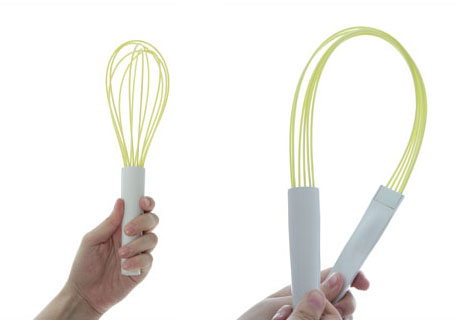
Oscar Bolton Green may just be the most prolific illustrator his age. At 23, he's produced more illustrations, graphics, ads, animations, books and book covers than I can digest in a week's worth of online perusal—and I peruse a lot. Born in London, Green graduated from Camberwell College of Arts in 2010. "Pretty soon after I graduated in 2010 Corraini offered to publish Bird Beak Book, which was a dream come true," Green said. "Everything seemed to follow on from there, really."
Since then he's worked on projects big and small, from cheeky homages to Dieter Rams (above) and with larger clients like American Express, Rolling Stone, GE and Modus Magazine. His latest project is Un Sedicesimo, a series produced by Corraini. "Every couple of months they ask someone to design a 16 page book," said Green. "At the time I was doing these line drawings using a pen I'd recently discovered. These turned out to be the starting point for the book. It was a real honour to create number 25 alongside Nathalie Du Pasquier."
His figurative work and character pieces are a delight; I particularly love the pages filled to capacity with objects and people. But even more than that I'm drawn to "Alphabet Animation" (below), a quick tour of the alphabet through a series of simple sketches of letters that morph into object after object and finally into the next letter. Like the rest of his work, it knows its clever but it doesn't take itself too seriously.
(more...)
 Image Courtesy of
Image Courtesy of  Figure 1: Design sketches used to support explorative design activity. Courtesy of
Figure 1: Design sketches used to support explorative design activity. Courtesy of  Figure 2: Like chess, CAD can be described as a process of 'moves', defined and constrained by the system. Courtesy of
Figure 2: Like chess, CAD can be described as a process of 'moves', defined and constrained by the system. Courtesy of 

















 Reporting by Yin Ho
Reporting by Yin Ho

 Blackbelt Sensei
Blackbelt Sensei



 Guactruck is Manila's first designer food truck.
Guactruck is Manila's first designer food truck.
 Guactruck's food is all sourced from local businesses, thus substantially reducing the company's carbon footprint in an island nation.
Guactruck's food is all sourced from local businesses, thus substantially reducing the company's carbon footprint in an island nation. The interior is as thoughtfully-designed as the exterior
The interior is as thoughtfully-designed as the exterior
